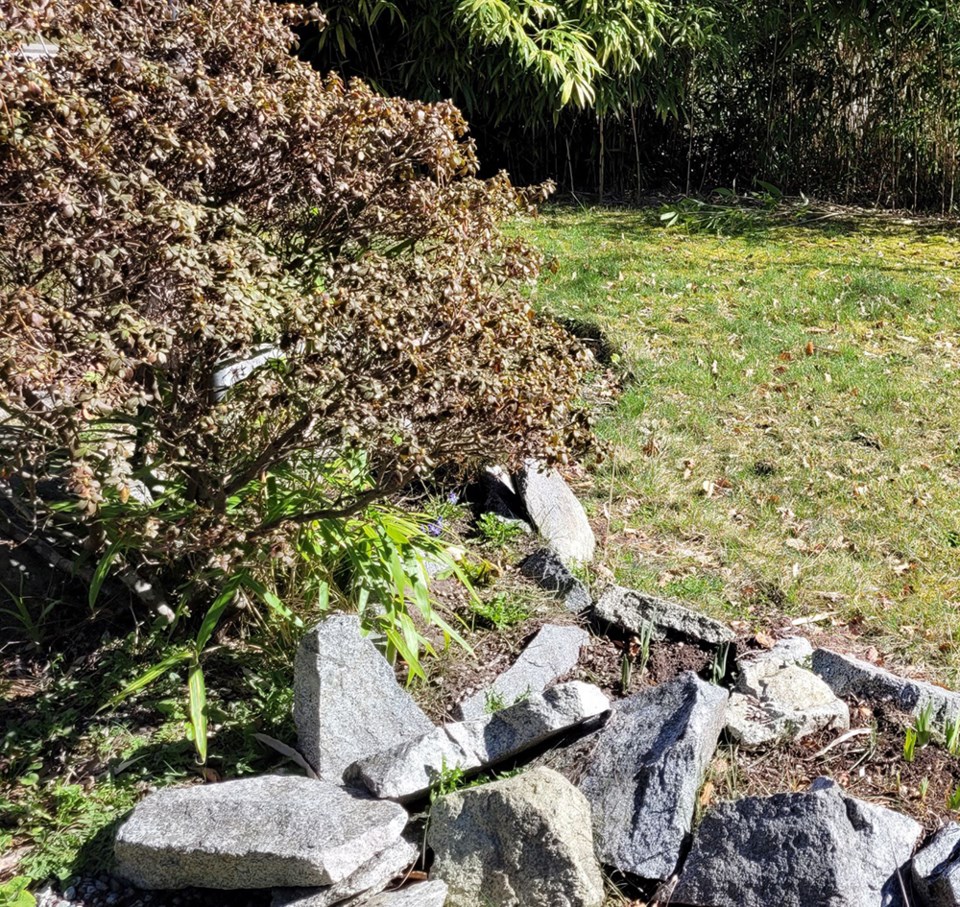The following is part two of an article submitted by Powell River Garden Club president Lesley Moseley. Part one published on Saturday, March 30.
Horsetail is an anomaly. Although a native plant, it is considered invasive because it is almost impossible to get rid of when conditions are favourable.
Invasive plants love the opportunity to spread into neighbours’ gardens. Another garden club member is furious with her neighbour for planting English ivy along the fence along the property line. Having enough work to do in her own garden, she resents the amount of work required to keep the ivy in check, chopping it and pulling up spreading roots that can go down three feet.
It may be advisable to exercise caution when choosing plants that may encroach on others property to ensure good relations with those living in the proximity.
I have plants in my garden that were not a surprise to discover are aggressively invasive: Blackberry, bamboo, laurel and bindweed. Blackberry is fairly easy to control; it seems the same canes keep trying to grow but they are not spreading. I am constantly pulling Laurel shoots I find all over the garden.
Bamboo is horrible. Despite forever cutting new sprouts, it still manages to spread over my front yard, gleefully inching closer to the house’s foundation.
Bindweed, also known as morning glory, is my worst enemy. I pull up miles of roots every spring, yet it still manages to thrive and lay claim to the vegetable garden. Crawling along the ground until it reaches something to climb, this abominable usurper chokes anything within its reach, even managing to pull some bushes down to the ground.
I have heard that patient, unceasing efforts to cut and pull up bindweed would eventually manage to eliminate it. I have yet to find any proof in that statement. English ivy sometimes makes its way into my garden; I’ve learned that I need to be on constant alert for invaders.
I was surprised and dismayed to discover that some of my plants are labelled as invasive: Periwinkle, butterfly bush, policeman’s helmets, Lily of the Valley, holly, golden loosestrife (I knew its relative, purple loosestrife has been designated invasive for years), and the aforesaid goutweed.
For the most part, these plants have not been a problem. They were originally planted in such a way as to be contained. The odd time that any have managed to escape their boundaries have been easily manageable. I was sorry to find out about the policeman’s helmets. They are very pretty, delicate little plants. I pulled them all out and disposed of them and they haven’t been back.
There’s a lot of information online about invasive species and the risks they pose to the environment, other species and even the economy. It’s worth the effort to research any plants that we are planning to introduce into our gardens.
Local garden centres are the best option for purchasing soils, manures and other soil amendments. Unwanted insects, weeds and parasites, such as jumping worms (transported in horticultural goods from Asia in the mid 1800s to the US and now recently discovered in Eastern Canada), outcompete slow-moving, native earthworms for nutrients, and their castings degrade the soil.
Resilient gardens
Many local nurseries are now selling native plants that can be transplanted into domestic gardens. Including native plants is an excellent way to develop a garden that is resilient, friendly to the environment and attracts pollinators and birds.
Taking native plants from the wild is not advised and can be illegal. Plants rely on their ecosystem to survive and moving them can prove fatal. Nursery-grown plants are far more suited for transplanting. Search online for District of Saanich gardening with native plants for an excellent guide for determining native species to adopt.
Gardeners understand firsthand the effects of invasive species. We know how one small mistake can lead to years of remediation that is time consuming, frustrating and costly. It is best to learn beforehand the identity and qualities of anything we are going to invite into our gardens and what precautions might need to be considered. After all, making the right horticultural choices are just as vital for a healthy planet as the choices we make for anything that affects our own health.
Are you planning to do some landscaping? It's a good idea to get some professional advice. Garden centres and landscaping businesses can help get you off to a good start. Or come to a garden club meeting. We always have a master gardener present who can answer your questions and members are happy to share their experiences and ideas.
Plants for sale at the garden club table at the plant sale on May 5 are checked to make sure they are not invasive. And if you need inspiration for garden design, consider attending this year's Spring Garden Tour on June 9.
Oh and how to help protect native bird species from starlings? A birdhouse with an entrance hole that is from three-quarters to one and one-quarter inch is too small for starlings to enter but is ideal for many native songbirds.
Happy, healthy gardening!
Lesley Mosely is president of Powell River Garden Club.
Join the Peak's email list for the top headlines right in your inbox Monday to Friday.




